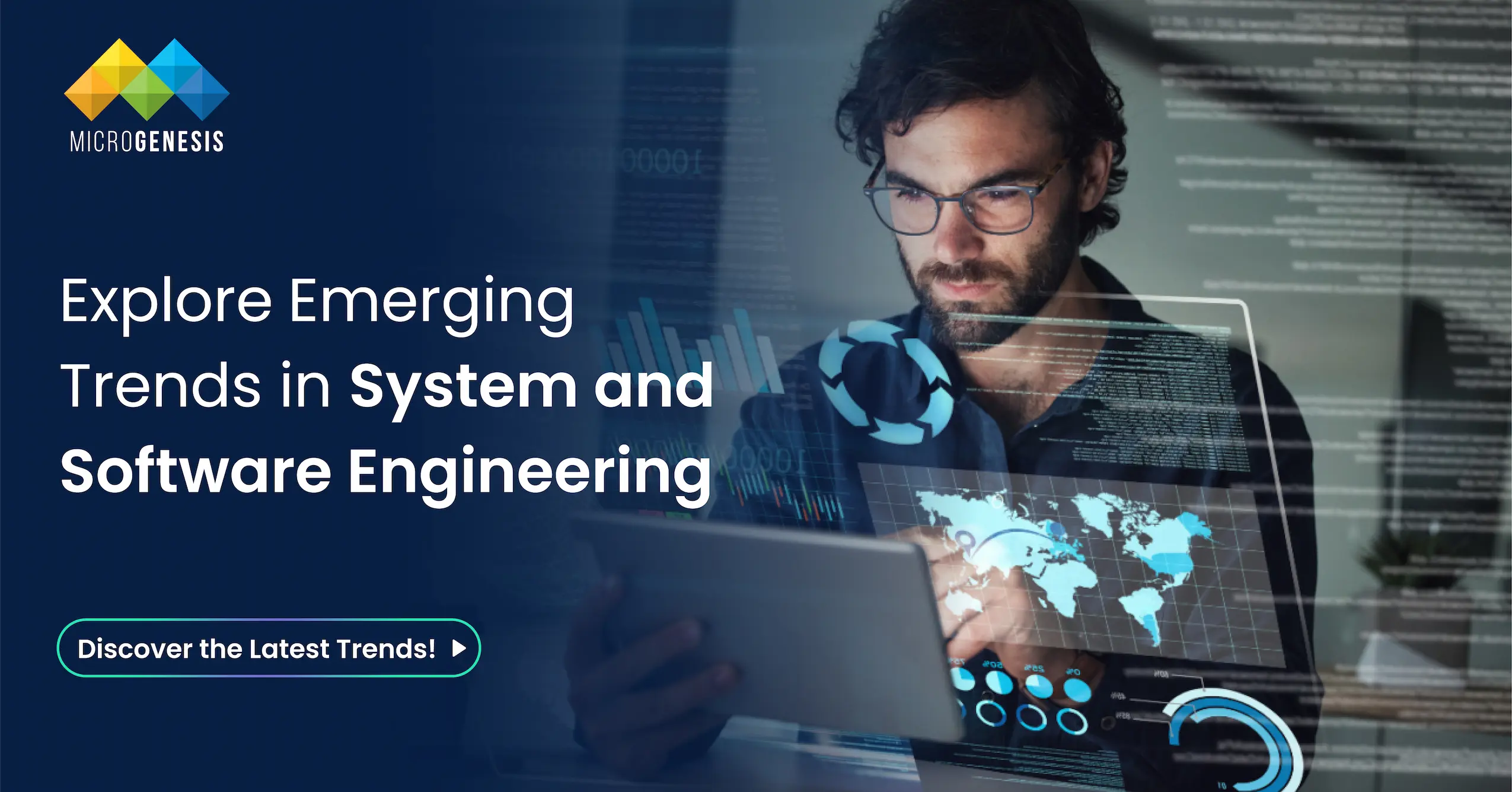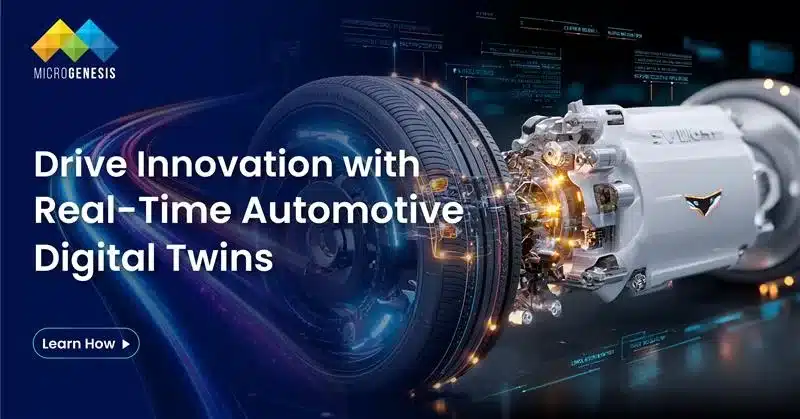The landscape of system and software engineering is rapidly evolving with new technologies shaping the way engineers design, develop, and manage complex systems. Emerging technologies like Artificial Intelligence (AI), Machine Learning (ML), Internet of Things (IoT), Digital Twins, and Blockchain are leading a transformation that will influence the future of engineering. In this blog, we will explore the key innovations and trends driving the future of system and software engineering.
1. The Impact of AI and ML on Software Engineering Practices
Artificial Intelligence (AI) and Machine Learning (ML) are already transforming various industries, and their influence on software engineering is profound. These technologies enable systems to learn from data, automate complex tasks, and make intelligent decisions with minimal human intervention. The integration of AI and ML in software development has several implications:
a. Automated Code Generation and Testing
AI-powered tools are increasingly being used for automated code generation, which allows developers to generate boilerplate code quickly, freeing them up to focus on more complex tasks. Platforms like GitHub Copilot and DeepCode leverage AI to assist developers by suggesting code completions, finding bugs, and improving overall code quality.
In terms of software testing, AI-driven testing frameworks can automatically generate test cases, detect anomalies, and predict potential defects in the codebase. This leads to higher efficiency and faster release cycles. Regression testing and unit testing are increasingly automated using ML-based tools that continuously learn from past failures and adapt testing strategies accordingly.
b. Predictive Maintenance and Debugging
AI and ML enable predictive analytics, allowing software engineering teams to identify potential system failures before they occur. By analyzing historical data, AI models can predict when a software component or system might fail, enabling proactive maintenance. This reduces downtime and ensures that systems remain operational.
AI also assists in debugging. With the ability to analyze massive codebases and detect patterns of defects, AI algorithms help engineers identify and fix bugs more quickly. This leads to significant improvements in productivity and software reliability.
c. Intelligent DevOps
AI-Driven DevOps, often referred to as AIOps, is becoming an integral part of the software delivery pipeline. AI enhances Continuous Integration (CI) and Continuous Deployment (CD) processes by automating performance monitoring, alerting teams to issues, and optimizing resource management. AIOps platforms can predict potential system bottlenecks, enabling more efficient resource allocation during deployments.
2. The Role of IoT and Digital Twins in Systems Engineering
The Internet of Things (IoT) and Digital Twin technology are revolutionizing systems engineering by creating interconnected systems that offer real-time insights and predictive capabilities. These technologies play a pivotal role in designing and maintaining complex systems, especially in industries like manufacturing, healthcare, and automotive.
a. Internet of Things (IoT) in Systems Engineering
The IoT is enabling systems to connect, communicate, and exchange data across a vast network of devices. This creates an ecosystem where embedded systems, sensors, and software interact to automate processes and improve system efficiency. By incorporating systems engineering services, organizations can design, implement, and optimize these interconnected systems, ensuring seamless integration and enhanced performance throughout the entire IoT framework.
For instance, in smart manufacturing, IoT devices collect data from machinery and feed it to central systems, which can then make real-time decisions to optimize production, predict equipment failures, and reduce downtime. Embedded software within these IoT devices ensures smooth communication between hardware components and larger systems.
In healthcare, IoT devices such as wearables and connected medical devices offer continuous monitoring of patients’ health. The data collected can be analyzed in real time, allowing healthcare providers to make timely interventions.
b. Digital Twins in Systems Engineering
A Digital Twin is a virtual representation of a physical object or system. In systems engineering, Digital Twins provide a real-time, dynamic model of complex systems that engineers can use for monitoring, analysis, and optimization.
Digital Twins are widely used in aerospace, automotive, and industrial systems to simulate and optimize system performance. For example, in aerospace, engineers use Digital Twins to monitor the health of aircraft engines during flights. Data from the physical engine is transmitted to the Digital Twin, where it is analyzed to detect any anomalies or predict when maintenance is required.
Digital Twins also enable engineers to perform virtual testing of system configurations before implementing changes in the real world, reducing the risk of errors and improving overall system performance. This leads to more efficient design, better resource management, and reduced operational costs.
3. Blockchain Applications in Software Security and Transparency
Blockchain technology is known for its role in securing financial transactions and digital assets, but its applications extend beyond cryptocurrency. In software engineering, Blockchain offers enhanced security, transparency, and accountability, especially for systems that require secure data handling, auditing, and version control.
a. Enhancing Software Security with Blockchain
One of the primary challenges in software engineering is ensuring that systems and software remain secure from malicious attacks. Blockchain’s decentralized nature and cryptographic hashing capabilities provide a robust mechanism for protecting data and software assets.
Smart Contracts, which are self-executing contracts with the terms of the agreement directly written into code, allow secure and automated interactions between systems. These contracts can be used to automate processes such as software licensing, ensuring that only authorized users can access specific software components.
Blockchain can also help prevent tampering with source code by storing code versions on a distributed ledger. Each version of the code is hashed and stored on the Blockchain, making it impossible for unauthorized changes to go unnoticed. This ensures the integrity of the codebase and creates a transparent audit trail.
b. Securing Software Supply Chains
In an era where software supply chain attacks are becoming more prevalent, Blockchain offers a solution to enhance the security and transparency of the software development lifecycle. By integrating Blockchain into the supply chain, organizations can track the entire development process, from code commits to production deployment.
Blockchain provides immutability, meaning that once data is added to the ledger, it cannot be altered. This prevents attackers from injecting malicious code into the system undetected. Additionally, each action in the development pipeline can be traced back to its source, offering full transparency and accountability.
c. Decentralized Applications (dApps)
Decentralized Applications (dApps) are software applications that run on a Blockchain rather than on centralized servers. These applications are tamper-proof, highly secure, and offer enhanced privacy for users. In software engineering, dApps represent a new frontier for creating transparent and secure systems, particularly for industries like finance, healthcare, and logistics, where data integrity and privacy are paramount.
Dig Deeper: Configuration Management in System and Software Engineering
Looking Forward: The Future of System and Software Engineering
As we move forward, several additional trends and technologies will shape the future of system and software engineering:
- Quantum Computing: While still in its early stages, quantum computing promises to revolutionize software engineering by solving complex problems that are currently unsolvable by classical computers. This could have significant implications for cryptography, AI, and simulation.
- Edge Computing: With the proliferation of IoT devices, edge computing is gaining traction as a way to process data closer to the source, reducing latency and improving real-time decision-making.
- Low-Code/No-Code Development: These platforms enable users to develop software applications with minimal coding knowledge, accelerating the development process and empowering non-technical stakeholders to participate in software creation.
- DevSecOps: Integrating security into every phase of the DevOps lifecycle, known as DevSecOps, will become increasingly important as software security threats continue to evolve.
Conclusion
System and software engineering are undergoing rapid transformation as AI, IoT, Blockchain, and Digital Twins reshape the landscape. These emerging trends enable smarter, more secure, and efficient systems that meet the demands of modern technology. Leading companies like Microgenesis, along with systems engineering consulting firms and top managed service providers, are driving this change by adopting cutting-edge solutions. Organizations embracing these innovations are better equipped to tackle complex engineering challenges, deliver high-quality products, and remain competitive in a dynamic industry. Staying updated on these trends is essential for success as we push the boundaries of engineering.




